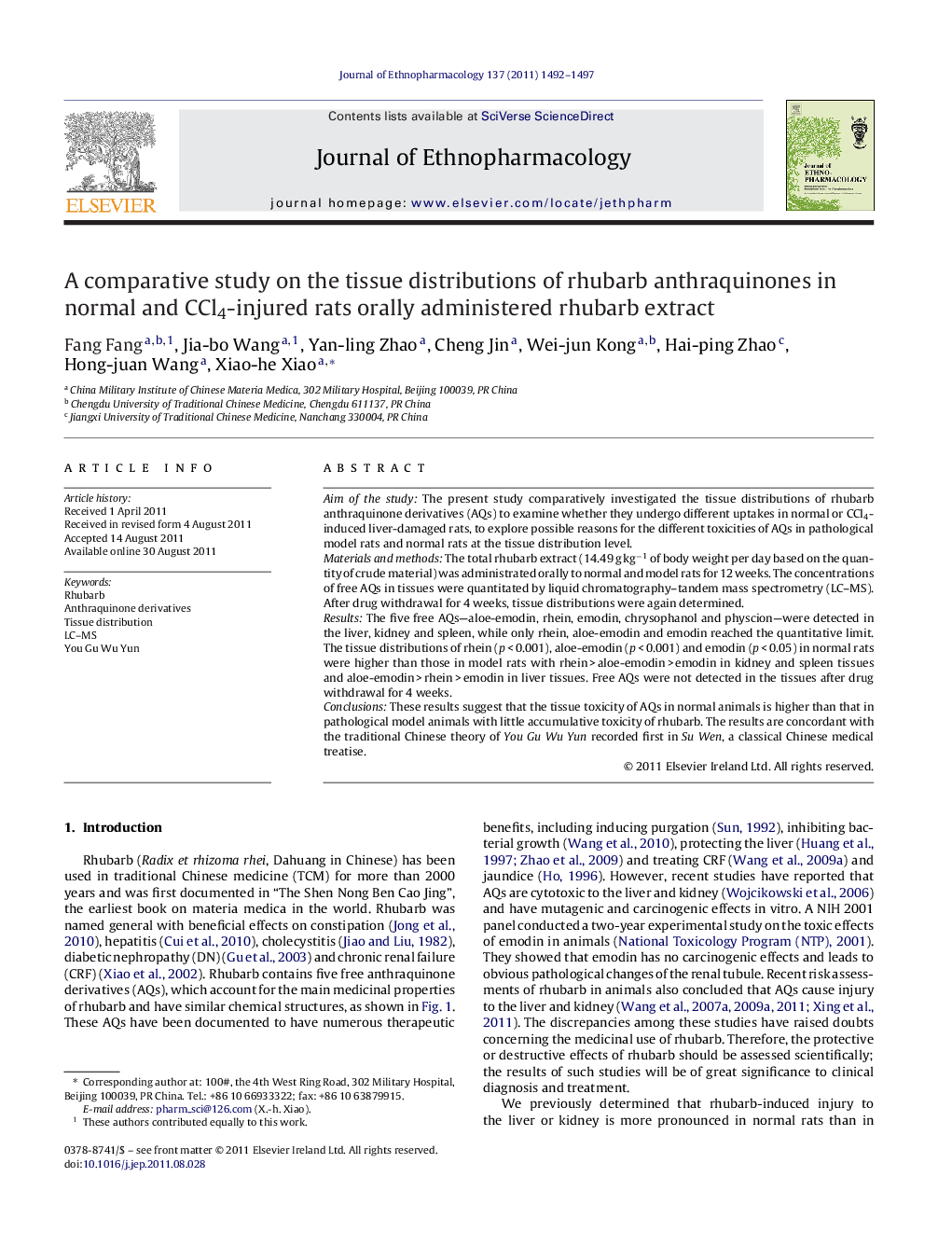| Article ID | Journal | Published Year | Pages | File Type |
|---|---|---|---|---|
| 5839471 | Journal of Ethnopharmacology | 2011 | 6 Pages |
Abstract
Aim of the studyThe present study comparatively investigated the tissue distributions of rhubarb anthraquinone derivatives (AQs) to examine whether they undergo different uptakes in normal or CCl4-induced liver-damaged rats, to explore possible reasons for the different toxicities of AQs in pathological model rats and normal rats at the tissue distribution level.Materials and methodsThe total rhubarb extract (14.49 g kgâ1 of body weight per day based on the quantity of crude material) was administrated orally to normal and model rats for 12 weeks. The concentrations of free AQs in tissues were quantitated by liquid chromatography-tandem mass spectrometry (LC-MS). After drug withdrawal for 4 weeks, tissue distributions were again determined.ResultsThe five free AQs-aloe-emodin, rhein, emodin, chrysophanol and physcion-were detected in the liver, kidney and spleen, while only rhein, aloe-emodin and emodin reached the quantitative limit. The tissue distributions of rhein (p < 0.001), aloe-emodin (p < 0.001) and emodin (p < 0.05) in normal rats were higher than those in model rats with rhein > aloe-emodin > emodin in kidney and spleen tissues and aloe-emodin > rhein > emodin in liver tissues. Free AQs were not detected in the tissues after drug withdrawal for 4 weeks.ConclusionsThese results suggest that the tissue toxicity of AQs in normal animals is higher than that in pathological model animals with little accumulative toxicity of rhubarb. The results are concordant with the traditional Chinese theory of You Gu Wu Yun recorded first in Su Wen, a classical Chinese medical treatise.
Related Topics
Health Sciences
Pharmacology, Toxicology and Pharmaceutical Science
Pharmacology
Authors
Fang Fang, Jia-bo Wang, Yan-ling Zhao, Cheng Jin, Wei-jun Kong, Hai-ping Zhao, Hong-juan Wang, Xiao-he Xiao,
